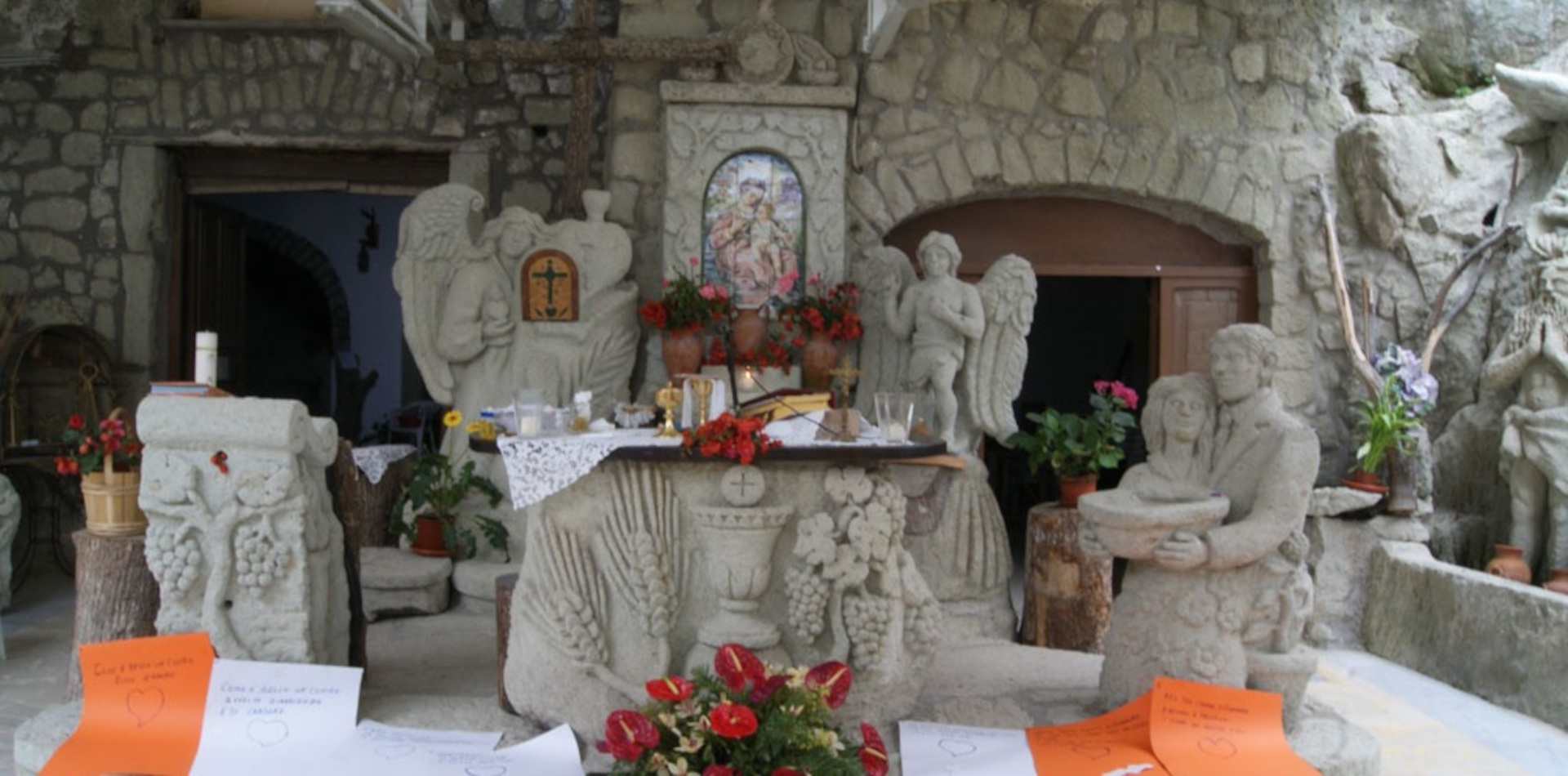
THE CHURCH IN THE ROCK
There are those who put a sword in the rock and those who, as in Forio, put a church in the rock....
This special church was born from an idea of Don Pasquale Sferratore a spiritual guide for all the faithful people of Forio who recently deceased. Its name is Queen of Roses, but it could be of all flowers, as there are many plants that adorn the entire garden, from lemon trees, to daisies and roses. The beloved parish priest wanted to create this church to meet the needs of the many tourists especially Germans who frequented our island, giving them the opportunity to participate in the ecclesiastical rite (in fact, the Mass was also said in German) enjoying the open air and in touch with the surrounding nature, then it became a favorite destination for residents as well.
The uniqueness of this Church it is not just the garden or because it is open air, but especially because it is located at the foot of Torre Nacera, one of the countless "watchtowers," in fact Forio is called the country of the Torrione, the towers were used hundreds of years ago to warn the population from the dangers that could come from the sea. Forio in fact is the part of the island most exposed to the open sea, it "looks" towards the distant lands of Africa, but its "look" is very wide and the dangers could come from anywhere, from this beautiful and ancient tower in particular there is a truly spectacular view, from the top the view is 360 °, you can admire the romantic and particularly colorful sunset and the reflection of those colors illuminate the entire Mount Epomeo, just that would be worth the price of the ticket which is free.
But the real characteristic of this splendid Church is its conformation, carved entirely from rock, or rather from Green Tuff stone, a stone found throughout the island of Ischia, although not uniformly. The southwestern side coinciding, roughly, with the municipalities of Forio and Serrara Fontana, is where it is found in greater quantity, to the point of encouraging the development of indigenous building techniques. The stone houses of the Falanga forest (Forio) and those visible along the road in the small rural village of Ciglio (Serrara Fontana) tell about a past, not even that distant, in which Ischitans dug the blocks of tuff scattered throughout the territory to make makeshift shelters and, in some cases, real houses.
The details we can find in the Church are spectacular, from the baptismal font to the external wall describing the crib, to the altar itself all handmade, carved in the rock, a church to be seen and admired not only by the faithful people but also by lovers of geology, art, culture, this is a stop that is not marked in the guidebooks, but it shouldn’t be missed.